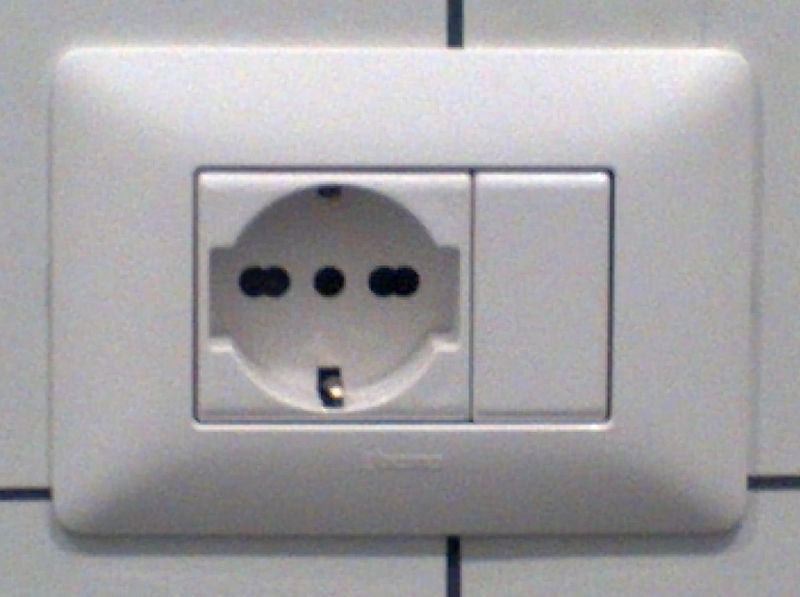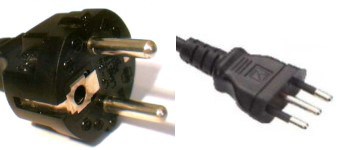Depending on where you decide to travel around the world, you can expect most countries to have their own standards for electrical devices.
If you’re planning to bring an electric shaver or other devices that require electricity, you might need to bring a power adapter.
Not only do the plugs and sockets look different, but they also typically have incompatible voltages.

Even if you could fit the plug from your device into a socket in Italy, it would definitely be an electrical and fire hazard.
As such, we’ve written this handy guide with the help of advice from our Rome tour guides to explain exactly what type of power travel adapter you’ll need when visiting this ancient city from another country.
- What Kind of Sockets Does Italy Use?
- What Voltage is Used in Italy?
- Do You Need an Adapter?
- Tips From Locals and Travelers
What Kind of Sockets Does Italy Use?
This is where things can get a little confusing, because Italy never standardized just one type of outlet or socket for their electrical plugs.

In total, there are three different types of sockets you can expect to find in Rome:
- Plug Type C (2-3 pin)
- Plug Type L (3 pin)
- Plug Type F (2 pin)
The plug types you can expect to see are largely dependent upon the age of the building.
While most hotels will have modernized power outlets that work with all three types, you might find a few airbnb locations where they haven’t really updated anything.
The most important thing to know is that the Type C plug will fit into pretty much every type of socket in Rome. Most power adapters made for Italy will use this kind of plug because it is ubiquitous.

If you’re visiting from the United States, it’s important to note that these round pins are not flat prongs like the ones on your plugs. None of these socket types are directly compatible with US electrical devices.
However, if you’re coming to Rome from another part of Europe, chances are your devices will be fine.
What Voltage is Used in Italy?
Most of the world uses circuits between 220-240 volts, and Italy fits neatly in the middle with an electricity supply of 230 volts.
What this means is that if you come from a country where electrical devices are rated for between 220-240 volts, chances are that you’ll have very little problem using them in Rome.
However, there are some countries that use an entirely different electricity supply, and their devices can be dangerous if plugged into an Italian socket.
If you’re visiting from the United States or Japan, your electrical devices will more than likely be rated for between 100-120 volts.
Do not try to plug any of these electrical devices into an Italian socket, it may cause electrical shock or fire.
While that is the case, there are some modern electronics in the US and Japan that are more likely to be rated for between 100-240 volts, which means they should work just fine in Italy as long as you have a power adapter.
Most laptops and similar types of devices are dual voltage rated appliances for 100-240 volts, so they should work with a voltage converter.
However, some smaller appliances like hair dryers might not be dual voltage rated, so they will be far less safe to bring along for the journey.
Do You Need a Power Adapter in Italy?
The answer to that question depends largely on where you are traveling from. Here are some of the most important factors to consider:
- If you’re coming from a country that uses Type C, L, or F sockets, chances are that your electrical devices will work just fine in Rome and throughout Italy.
- Even if you live in a country with different voltages, you should check whatever electrical devices or appliances you plan to bring to see if it is rated for up to 240 volts. If so, it should be fine with a power adapter.
If you are visiting from one of the following countries, you will almost certainly need a power adapter:
- United States
- Canada
- Mexico
- Japan
- South Korea
- Philippines
- Taiwan
- Vietnam
- Bahamas
- Costa Rica
- Panama
- Puerto Rico
Power adapters will allow you to plug devices from home into outlets in Rome, and they can be purchased at most electronics and department stores.
You can also find them quite easily on most major online retailers, and often at airports as well.
Voltage converters are a different beast altogether, as they convert the power coming from Italian sockets from 230 volts to 120 volts (or 115 if you’re in the Bahamas). This is also known as a 100-240v power converter.
If you have a dual voltage device, all you will likely need is a power adapter. If you have any device with a motor or heating element, chances are it will need a voltage converter.
Voltage converters are usually a lot more expensive, and also quite heavy. To put it simply, they are not a good option for travelers.
It’s actually a much better idea to only bring dual voltage devices and use a power adapter to plug them into Italian sockets.
Most modern power adapters include usb ports for all your usb devices including tablets and cell phones, and prices typically range from $25-$40.
Tips From Locals and Travelers
If you’re looking for even more advice or information about voltage converters and power adapters, we recommend checking travel groups on Facebook.
While we’re obviously partial to our own Rome Travel Tips group, you can also find a lot of very useful information on the Rome & Italy Travel group.
Here are some of the better tips provided by both locals and travelers who have been to the ancient city.

This is a common experience when it comes to hair tools, because they are usually high voltage devices with a heating element.
Even with a voltage converter, using these types of electronics can be dangerous for a variety of reasons.
As Arvon points out, some of the power adapters used by these types of devices run at 60hz instead of 50hz, and that can cause the transformer in the adapter to heat up and potentially even burn open or melt the plastic.

When we say it is hazardous to bring hair dryers and straighteners, we mean it. Thankfully, there are some alternatives you might want to consider.
As Victoria notes, most hotels, Airbnb’s, and Vrbo rentals in Italy actually offer hair dryers and other devices themselves. While it might not be the hair dryer you’re used to, it’s certainly an option.

The reason they offer these amenities is precisely because it is dangerous for tourists to try using their own electronics without voltage converters.
To avoid the necessity for costly repairs and keep everyone safe, they usually provide all the electronic devices you’re likely to need.
However, if you’re particularly picky, you can always purchase a new hair dryer when you get there.
It might not be a perfect option, but it’s far better than taking a chance that your own hair dryer won’t literally blow up in your face.

Arvon had even more helpful advice, providing an image to show travelers what types of plugs are necessary in Italy.
He also points out that computers, cellphones, cameras, and other devices typically have a dual voltage power supply that can be used safely with a power adapter.

In addition to this advice, Arvon also provided an image showing US travelers exactly how to use a power adapter in Italy.
If you’re confused about how your plug should fit into the adapter, this should make things perfectly clear.
For even more excellent advice, make sure to check Rome & Italy Travel and Rome Travel Tips on Facebook.






